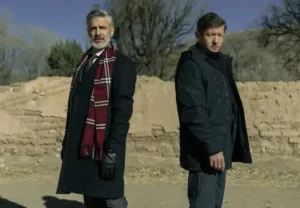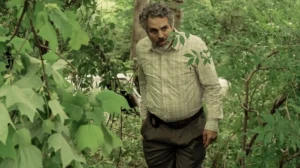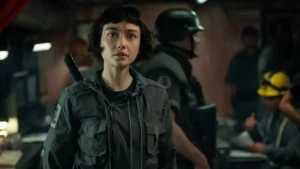Summary
La Funeraria is an unusual, sad story about a haunted funeral home. Sympathetic characters, beautiful cinematography, and intense music. Mauro Iván Ojeda is a director to watch.
The atmosphere is everything in La Funeraria (known as The Funeral Home or The Undertaker’s Home in some countries). Right from the start, with the camera and score together tiptoeing around this dusty and cluttered building – part home, part mortuary – we are in no doubt this is one creepy locale. This is nothing like the Ibis and Jacquel Funeral Parlor from American Gods: unsophisticated and frankly miserable.
The people who live there are kind of miserable too. First, we meet Estela (Celeste Gerez) and her teenage daughter Irina (Camila Vaccarini): Estela seems tired of life, and Irina simply doesn’t want to join in; partly because she is grudgingly staying at The Funeral Home: she is still grieving her late father and has little respect for her stepfather Bernardo (Luis Machín), whose home and business this is. Bernardo too is finding life hard, particularly with respect to his marriage.
It’s no wonder there’s such a sense of doom and gloom about this place: not only do they deal with death and grief on a daily basis, but some of the departed still move about the place too. Bernardo has been reassured by a wise woman he knows, Ramona (Susana Varela), that these “presences” are utterly harmless, and come with the territory, but first Irina and then Estela find them increasingly unsettling.
La Funeraria was written and directed by Mauro Iván Ojeda, his first film, and I really admired the gradual escalation of the drama, both in terms of the domestic tension and the spooky goings-on. What at first seemed rather pedestrian, somewhat like the ghosts in Extra Ordinary (but without the laughs), became unsettling and then downright dangerous. Irina had every right to be scared – which no-one should feel in their own home – and Vaccarini’s portrayal was impressive, especially as the least experienced of the cast. Irina was the one who didn’t have to be there but was most affected by the place.
Jeremías Smith’s music, and indeed the sound in general, was very effective: plaintive, varied and somehow managed to convince me everything was damned scary, even when I hadn’t quite seen it that way myself yet. The only snag was there was simply too much of the music, which meant I lost sight of my real feelings towards the film when it got to about halfway through, and it lost its strength in return.
Despite that, there was a huge amount to admire in La Funeraria, especially in the last third or so, when Ramona started to understand what lay behind the “presences” in the house and her confrontation with them brought consequences. This was certainly a different kind of haunted house film, with beautifully lit memories coming to life and tragic possession scenes. The writing was certainly perceptive, too, with poignant observations about how people are remembered and missed. Just don’t go in expecting an Argentinian version of The Cemetary Man.
La Funeraria has its UK premiere at FrightFest, October 2020.



